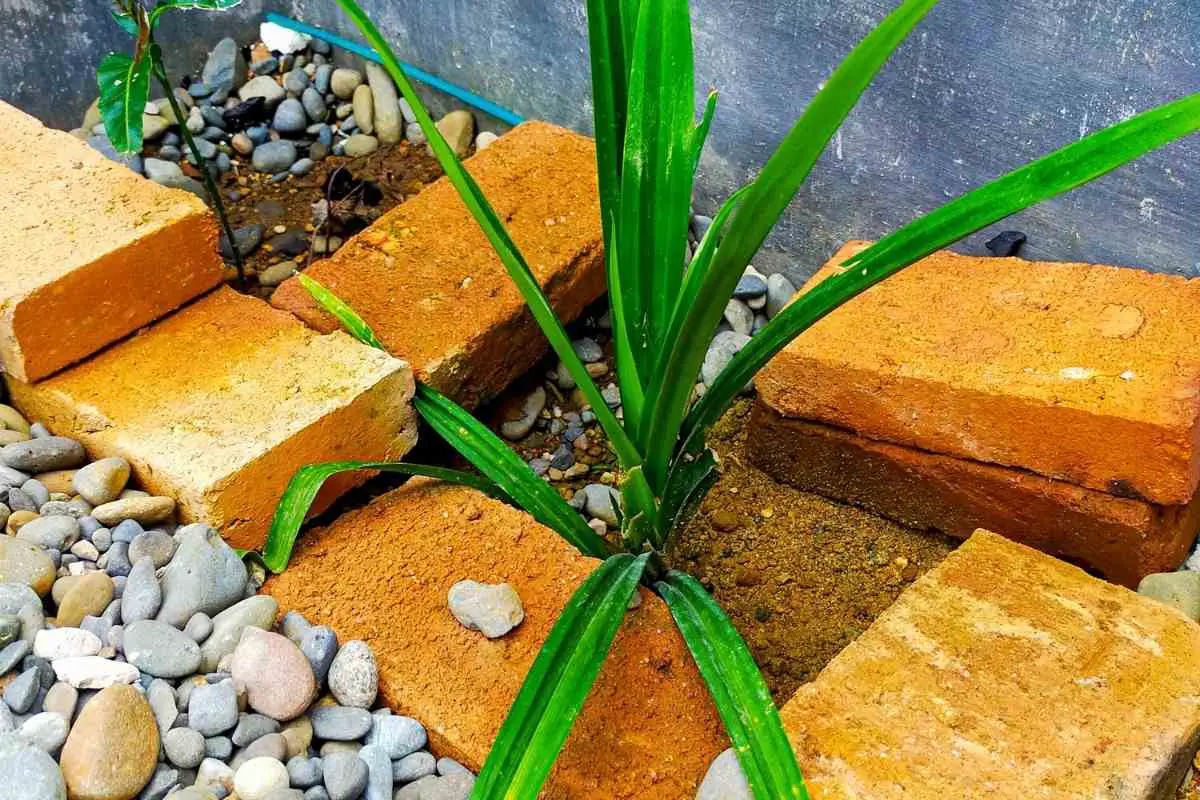Pandanus amaryllifolius, pandan plant, or screwpine, is a tropical evergreen that is indigenous to the Philippines and Indonesia.
The plant has been introduced to other parts of the world and is now commercially grown in countries such as Singapore, Thailand, Vietnam, Malaysia, India, and Sri Lanka.
The plant is also popularly used for ornamental purposes in landscaping.
If you’d like to add this plant to your garden, following this grower’s guide will help you give it the best care possible.
About the Plant
Pandan plant grows to a height of about 30 to 50 feet and has a leaf span of 6 to 10 feet.
The leaves are simple, alternate, and spirally arranged. They are oblong-lanceolate to narrowly elliptical in shape with serrated margins.
The leaf surface is glossy green and the undersides are pale green. The leaf stalks are short and stout, about 1 to 2 inches in length.
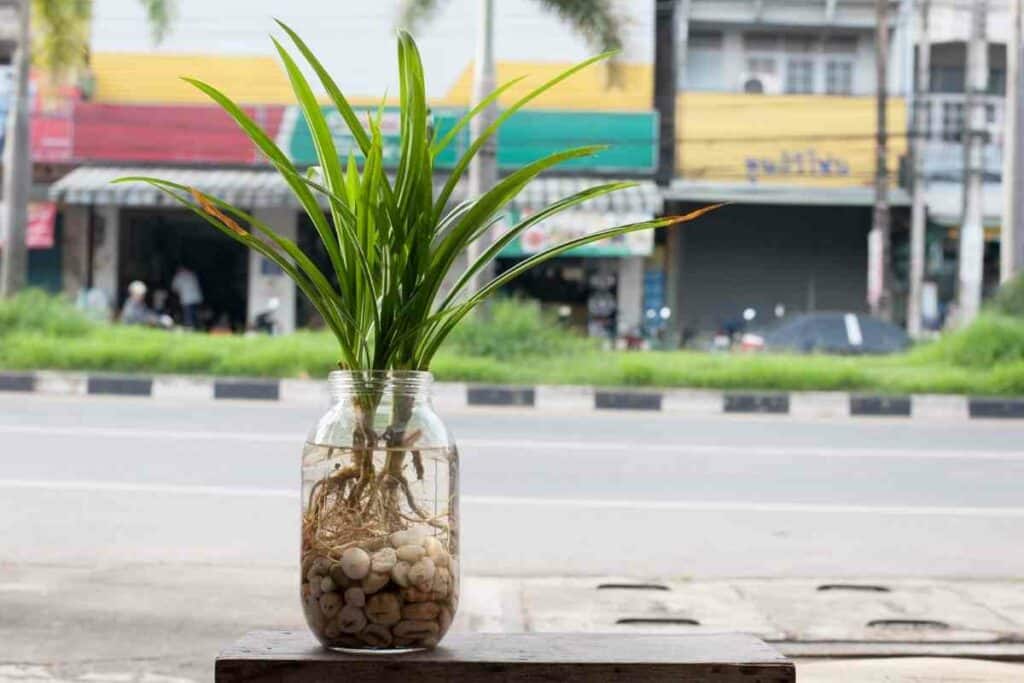
Pandan plant is monoecious, meaning that both male and female flowers are borne on the same plant.
The flowers are small and white, borne in clusters of 3 to 5.
They are surrounded by large, green bracts. The flowers are followed by reddish-brown fruits that are about 1 to 2 inches in diameter.
The fruit of the pandan plant is reddish-brown and they grow to about 1 to 2 inches in diameter.
The fruit looks more like a cone than a traditional fruit, and it can be eaten raw or made into marmalade.
USDA Zone
Pandan plant grows best in tropical to subtropical climates with temperatures ranging from 68 to 86 degrees Fahrenheit.
It prefers sheltered locations and does not tolerate exposure to direct sunlight or strong winds. The plant is also susceptible to frost damage.
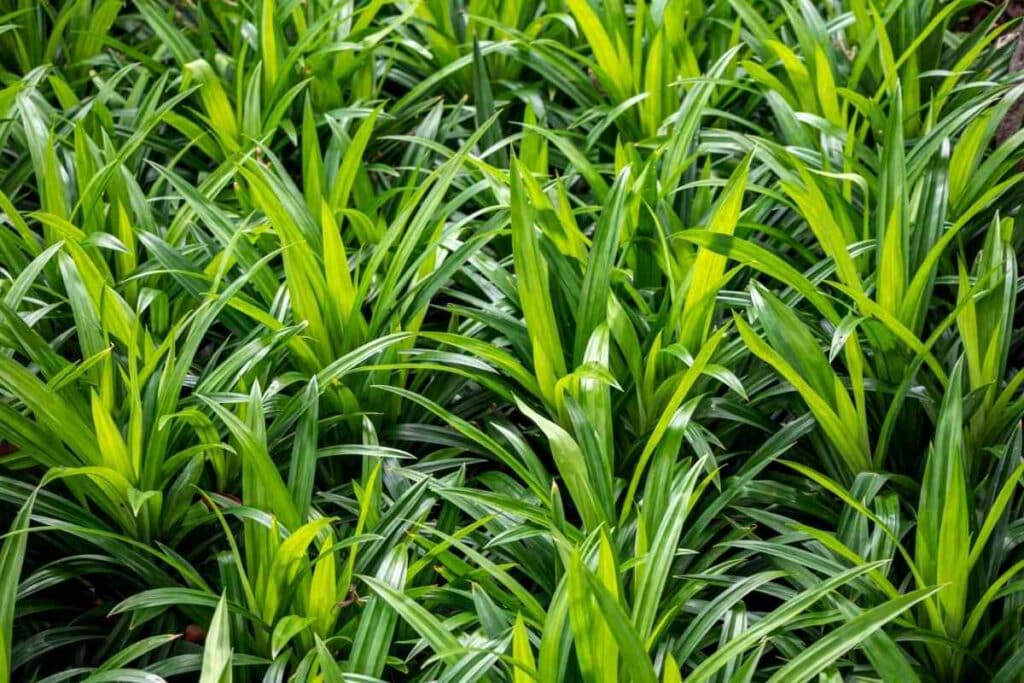
Since the pandan plant needs a tropical climate, the best USDA zones are 10 and 11.
This is mostly along the coast from South Carolina to Miami, everything south of San Antonio, Texas, and a little bit of the west coast from Arizona up to California.
Is Pandan Plant Poisonous
It’s a great question to ask before bringing a plant home, especially if you live with kids or pets.
Luckily – The pandan plant is not poisonous or toxic and is safe for you to bring home.
The Many Uses of the Pandan Plant
Believe it or not, the pandan plant has a few uses that are both tasty and medicinal.
Uses in Food
Pandan plant tastes like a cross between vanilla and licorice.
The leaves are often used to flavor desserts, drinks, and savory dishes. The fruits that sometimes grow are also edible and have a sour taste.
When the pandan plant is boiled, it produces a stunning emerald green dye that can be used to color desserts, paper, and even your hair.
Medicinal Uses
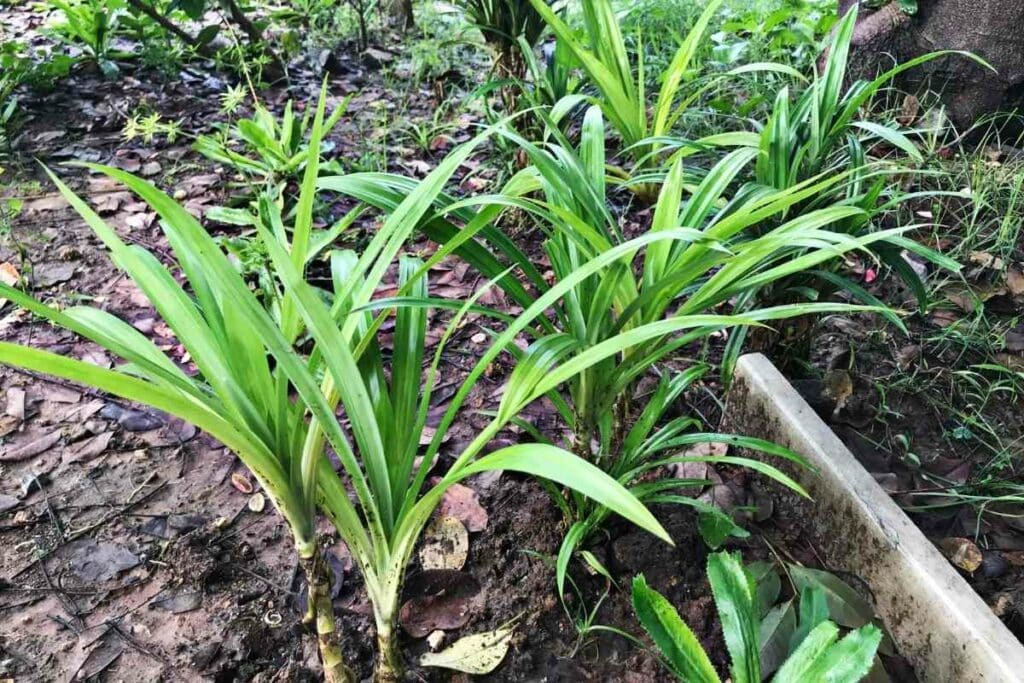
The pandan plant also has a few medicinal properties that make it a valuable addition to your garden.
Pandan plant is a natural diuretic and can be used to help treat urinary tract infections.
The leaves are also cooling and can be used to relieve heat stroke, sunburn, and inflammation.
Pandan plant has been shown to be an effective repellent against a variety of bugs, including:
- mosquitoes
- ants
- spiders
The leaves release a strong smell that wards off these pests.
You can use pandan leaves to make a natural insect repellent. Simply crush a few leaves and rub them on your skin to repel bugs.
Pandan plants can also be used as a natural dye. The leaves produce a green dye that can be used to color fabric and other materials.
Lifestyle Uses
In countries where the pandan plant originates, such as the Phillippines and Indonesia, use the leaves of the pandan plant to make fiber products.
Clothes, hats, baskets, bags, and shelters are all made from the leaves of the plant.
They are woven together, similar to palm fronds to create a tightly bound, durable material.
Growing a Pandan Plant
Pandan plants can be purchased in greenhouses, grown from seed, or grown by using leaf cuttings.
How to Grow a Pandan Plant from Seed
For seed propagation, the seeds must be soaked in water for 24 hours before being planted in a propagating soil medium.
You should keep the soil moist and don’t let it dry out until the seeds germinate.
This stage can take anywhere between two and three months.
How to Grow a Pandan Plant from a Cutting
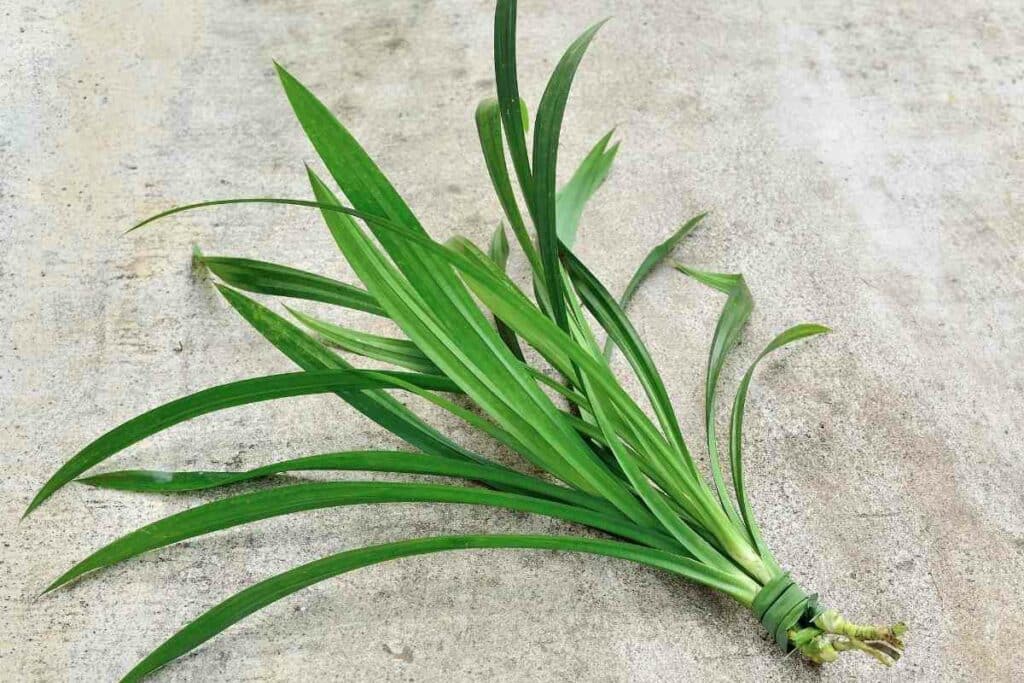
A healthy pandan will produce offshoots.
You can identify them because there will be new stems with visible aerial roots that branch off from the main plant, or slightly off to the side of the main plant.
All you have to do to separate the offshoot from the plant is to pull it off with your hands.
Don’t cut it or you risk cutting the aerial roots. Then to prepare the offshoot, pull off the bottom leaves to allow space for new roots to grow.
If the offshoot you pulled off already has established roots, you can plant the roots deep in a pot, keep the soil moist, and keep it in partial shade for a few days.
Take a week and slowly introduce the plant to direct sunlight to give the roots time to adapt.
From Experience – If the offshoot does not have developed roots, you can place the offshoot in water until roots begin to form. Once they do, you can follow the previous step as though it had roots all along.
Caring for Pandan
Once you get your hand on a pandan plant, it’s up to you to look after it and help it thrive.
Pandan plants are pretty hardy and easy to take care of, especially if you follow these care points.
Soil
The recommended soil mix for growing pandan plants is 3 parts sandy loam, 2 parts peat moss, and 1 part perlite or coarse sand.
This type of soil will give pandan plants the right balance of well-draining soil and water retention.
Although these seem counterproductive, the perlite will hold onto moisture so there’s access to water, but the roots won’t be sitting in a pool of water since it will keep draining deeper into the soil.
Water
The soil should remain moist at all times, moist but not soggy.
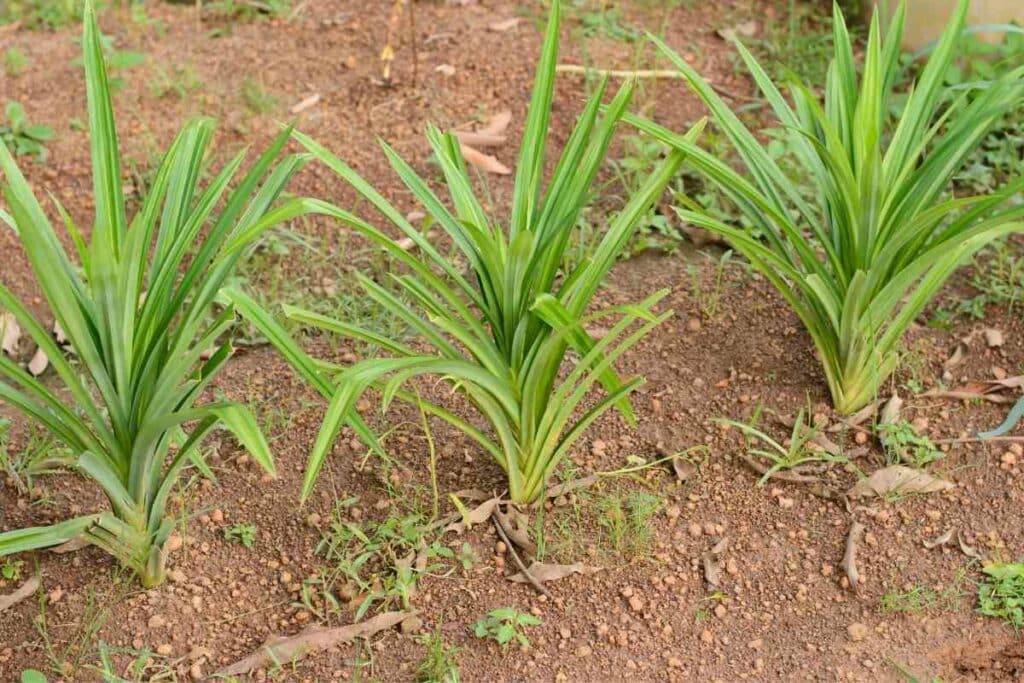
You could be watering every day, or even twice a day when the weather is extremely hot.
During the hot spring and summer months, you can also spray the leaves to help keep the plant hydrated.
When the Weather Cools – You should be able to stop misting the leaves entirely, and just monitor the moisture level in the soil and water as needed.
Sunlight
Pandan plants love sunlight, but they don’t like sitting in direct sunlight.
If you plant your pandan directly in the ground, choose a spot that receives very little direct sunlight.
Near a house where it will cast a shadow on the garden, or under a structure or tree are great spots to plant them.
If you plant in a pot, you have the ability to move your plant out of the sun if you notice you’ve put your plant in the wrong spot.
You can also bring your plant inside if you live in any part of the U.S. outside USDA zones 10 and 11.
Temperature and Humidity
Pandan plants like it on the warm side and prefer a humid environment.
If you live in an area with cool winters, you should bring your plant inside or at least into a garage to overwinter.
If you don’t have access to a greenhouse or can’t bring your plant inside for some reason, then try to keep it in a spot where it will be out of the wind and rain as much as possible.
Fertilizer
Pandan plants are extremely hungry for nutrients.
These hungry plants need constant feedings with compost or natural fertilizers like:
- chicken manure
- sheep manure
- fish emulsion
- or seaweed emulsion
Fertilizer should be applied every two to three weeks from spring to fall, and not at all during the winter months.
When the weather begins to cool, the plant will stop growing and won’t use the fertilizer you give it after that point.
Container Size
Pandan plants do exceptionally well in containers if you use the right size.
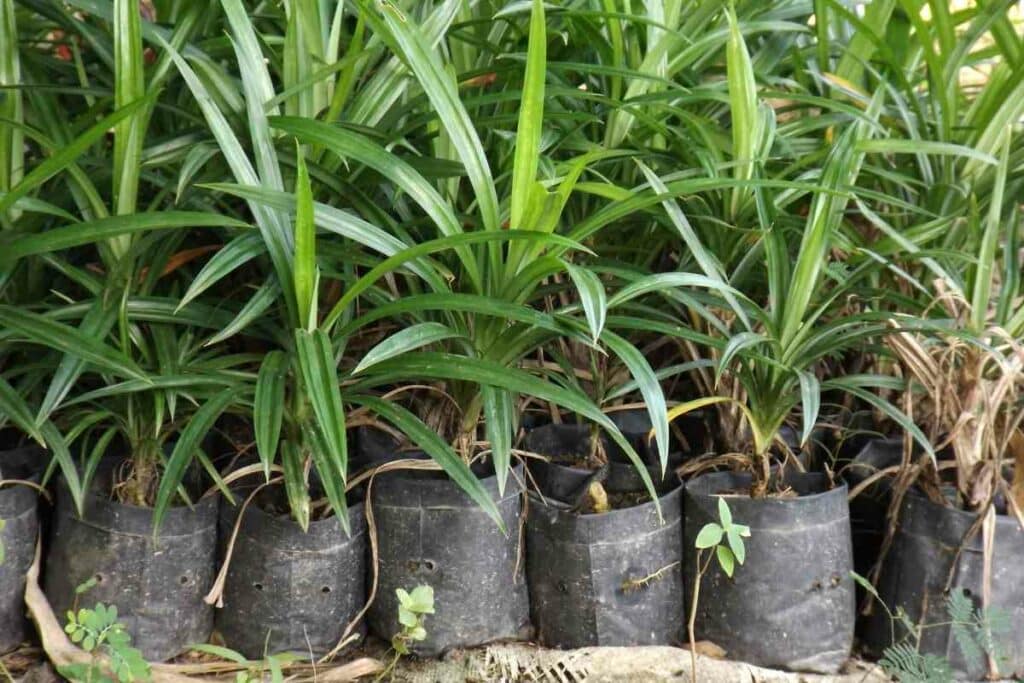
At a minimum, the pot for a pandan plant should be 20 L. The roots will grow deep and wide to support the plant.
If you want the pandan plant to continue to grow larger, repot the plant in a bigger pot every two years.
You can propagate offshoots directly into pots to create more plants.
To do this:
- Choose a healthy plant with several offshoots.
- Pull the offshoots from the plant using your hand, making sure each one has at least two leaves.
- Fill a pot with a well-draining potting mix and water it thoroughly.
- Make a small hole in the mix with your finger and insert the base of the offshoot.
- Gently firm the mix around the offshoot and water it again. Place the pot in a bright, warm spot and keep the mix moist but not soggy.
Solving Common Problems in Pandan Plant
Pandan plants experience two common issues, and they both have to do with the waterings.
Over-Watering
The first issue is over-watering your pandan plant.
When you start noticing the leaves of your plant are turning yellow, or the stem is becoming soft, this is a strong indication that your plant is getting too much water.
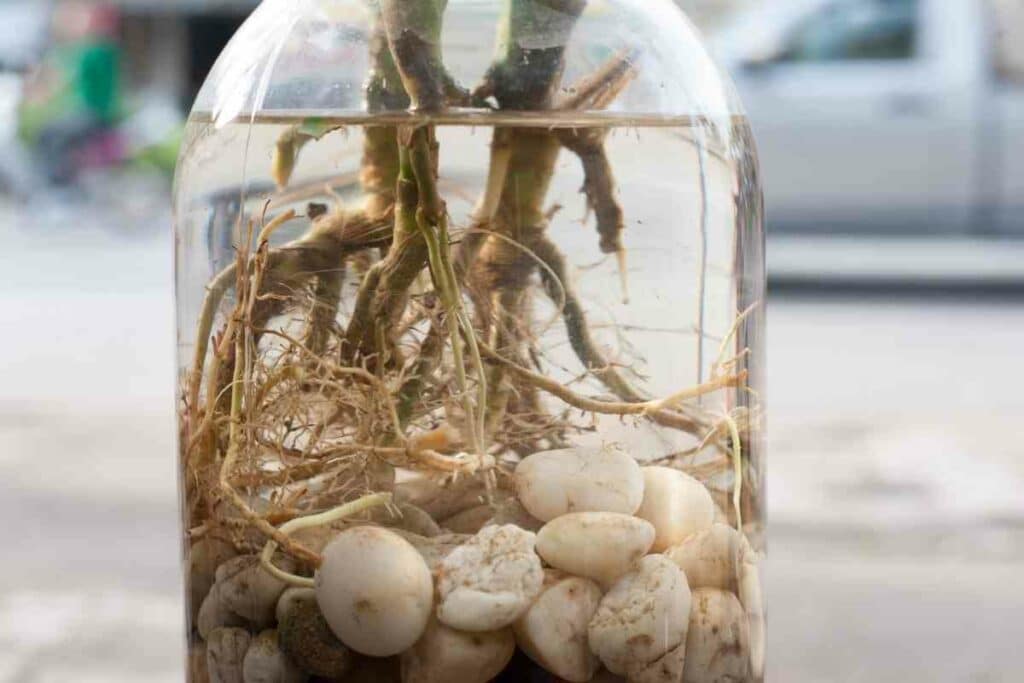
When pandan plants get too much water, it causes root rot and the plant isn’t able to continue getting nutrients from the soil.
When there are no more nutrients, or even water being absorbed by the roots, the plant starts dying and photosynthesis slows.
This is why the leaves turn yellow, it is the absence of chlorophyll in the leaves.
Under-Watering
The opposite is under-watering the plant.
When you notice the tips or the edges of the leaves begin to turn brown, think about how often you are watering your plant.
You either aren’t watering your plant enough, or you aren’t watering frequently enough.
If you give your pandan plant quite a bit of water on a frequent cycle, the soil may have become hydrophobic, meaning it is repelling water.
If this is the case, you’ll have to rehydrate the soil.
You can do this by adding a wetting agent to the top of the soil, which reduces the surface tension allowing water to pass through instead of dripping down the sides of the pot.
You can also till organic matter into the soil if your plant is outside.
The organic matter brings nutrients back into the soil and it helps to aerate the soil.
The space between the soil particles will increase allowing for water to travel to the roots.
Pests
Unlike most plants, the pandan plant is not susceptible to pests.

This is because the leaves of the pandan plant have insect repellent qualities.
In fact, pandan leaves are purchased for homes to repel cockroaches and mosquitos.
Have You Noticed? – It is possible that you will find spider mites on your plant. If you do, they are easy to get rid of. Simply wipe away the delicate webs with a damp paper towel, and spray an insecticidal soap to kill any leftover bugs or eggs.
You can make insecticidal soap at home by combining 1 cup of canola oil and a couple of drops of dish soap.
Add this mixture to a spray bottle and spray the underside of the affected leaves.
Final Thoughts
The Pandan plant is an attractive addition to any garden.
It can be used as a border plant or planted in mass as a ground cover. The plant is also well suited for container gardening.
Grow pandan plant in a sunny to semi-shaded location and water regularly to keep the soil moist but not soggy.
Apply a balanced fertilizer every two weeks and repot the plant every two years. With proper care, the pandan plant will thrive and provide many years of enjoyment.
